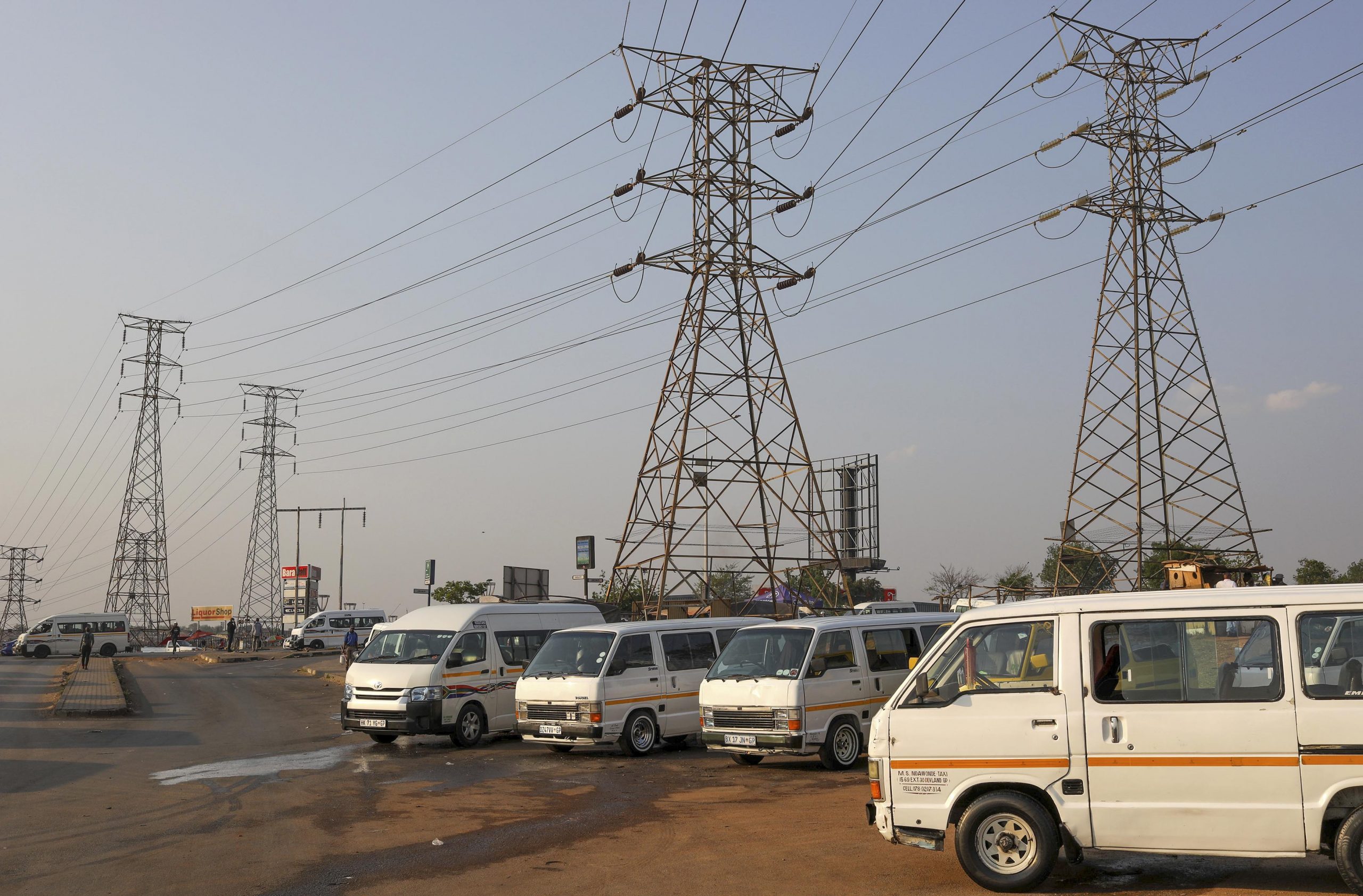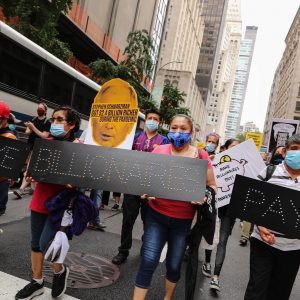Working class to finance Eskom’s privatisation
Eskom’s proposed new tariff structure will see working and middle-class consumers pay more for electricity than bigger consumers, while private capital benefits from basic service provision.
Author:
24 February 2021

Economic hardship in South Africa, exacerbated by the harsh months of Covid-19 lockdown and loss of life owing to the pandemic, has old roots. And, from sector to sector the outlook for the future suggests more difficult days lie ahead, with recent developments in the electricity sector among the sharpest indicators of the gravity of the crisis.
State-owned utility Eskom, through a recent court judgment against the National Energy Regulator of South Africa (Nersa), has moved to recoup a potential R69 billion over a two to three-year period by increasing the cost of electricity for certain consumers.
These changes come in conjunction with Eskom issuing a proposal for public comment that advocates for changes in the structure of tariff charges, marking the latest step towards private-sector reform. Eskom submitted this proposal, which changes how consumers are charged for electricity, to Nersa on 22 January. It would be the first shift in fee structure since 2012.
The proposal identifies three key motivations for the revisions: recent advances in technology; the changing landscape of electricity provision; and the government’s decision to unbundle Eskom into transmission, distribution and generation companies, and appreciation that current tariffs are not reflective of the cost of supply of electricity to individual consumers.
Related article:
The changes are designed to be “revenue neutral”, which implies that they will not increase the amount of revenue Eskom collects. Tariffs will be higher for some users and lower for others.
Eskom presented arguments to the Johannesburg high court on 28 July 2020 in its ongoing case with Nersa contesting the regulator’s lack in setting sufficient electricity price increases between 2014 and 2017. The high court found in favour of Eskom, which prompted the regulator to offer a settlement of R6.6 billion, recovered over the next two years through tariff increases.
Eskom, however, is demanding to increase the allocation to R23 billion from 2022 alone as part of its aggressive approach to resolve its continuing debt crisis.
Increased cost burden
Nersa member Nhlanhla Gumede confirmed that the recent proposal from Eskom seeks to reduce existing electricity subsidies and increase the overall cost burden on consumers. There are no set amounts for subsidies for different categories of users at present, and Eskom is using this fact to counter criticism of its plan to lower subsidies for user groups such as those in rural areas by saying there is nothing to measure against. Gumede called for further stakeholder engagement, particularly with impoverished users, in the policy formulation process.
“The challenge is that it tends to be the wealthy who has access to platforms to communicate their views and interests to the government and the public, via the media and through lobbies. Those views can become over-represented in policy, which then becomes laws. Nersa as a regulator implements the law,” said Gumede.
Eskom’s submission for tariff reform revises the current system by introducing “cost-reflective tariffs (cost-to-serve)” and “time-of-use tariffs”.
The idea of a cost-reflective tariff is to use a method of calculating individual charges based on the specific costs involved in supplying the consumer electricity at a particular time. The time-of-use tariff is a variable charge to consumers that is intended to change user behaviour by penalising energy use in peak periods with higher costs of electricity. Ideally, this results in lower consumption during those times, which decreases the burden on existing infrastructure.
Related article:
Alarmingly, the additional changes to be expected in the new structure include an increase in rural user tariffs as well as for working-class and middle-class users previously under the domestic tariff designation. For example, in the City of Cape Town, this refers to homes valued at between R450 000 and R1 million.
The South African Local Government Association highlighted that in the submission, users consuming 300kWh to 800kWh can expect a R300 monthly increase, while users consuming in excess of 1 200kWh experience a slight decrease. For context, the most popular category in the current regime is domestic, which in the City of Cape Town consumes roughly 420kWh per month.
It is important to note that studies on cost-reflective and time-of-use tariffs across several more industrialised countries such as Australia and the Netherlands, where one would expect higher uptake owing to the comparatively large middle class, demonstrate that voluntary adoption of dynamic tariffs is low.
In South Africa, the installation of home solar-power systems remains by and large the purview of the wealthy because of the high capital costs in an economy faced with mass retrenchments, falling wages and shrinking social security.
The combination of these factors suggests the structural changes will have little impact on shifting consumer behaviour overall. Instead, they will penalise working-class consumers who use electricity particularly during the evening peak time, after their 8am to 5pm working day.
Private participation
President Cyril Ramaphosa made two key announcements on 13 February relating to the expansion of private participation in the energy sector. As part of the process to meet a shortfall in capacity and ease the frequency of load shedding, the government received bids for an emergency procurement programme to install 2 000MW of capacity using gas and renewable energy resources for operation between 5pm and 9.30pm at an estimated cost of R40 billion.
The president further declared that the state is moving to procure 12 000MW of private renewable energy as well as energy from gas and potentially coal plants under the Independent Power Procurement initiative by the end of 2022.
Under the tariff structure reform, it appears that this wave of proposed changes will also have a significant impact on the working class.
Related article:
The move to cost-reflective tariffs will mean that the costs of the new generation capacity from the private plants will be passed on directly to consumers. The conditions of the contracts, including the cost of electricity charged by all independent power producers (IPPs) to date, are issued in 20-year power-purchase agreements hidden under non-disclosure agreements. The implications of building the emergency procurement round power plants in combination with the proposed time-of-use tariff mean that working-class consumers will be hit with even higher charges at crucial evening peak periods to finance the new infrastructure.
Across Africa, market reforms in the energy sector have been advocated since the 1980s as a by-product of the structural adjustment programmes advanced by the World Bank and the International Monetary Fund.
In recent years, market reforms in Zambia, impacting state utility Zesco, which operates as a state monopoly with special support to the historical mining industry, much like Eskom, offer an important glimpse into the future for South Africa.
Energy poverty
The Power Paradigm in Practice: A Critical Review of Developments in the Zambian Electricity Sector by Kate Bayliss and Gabriel Pollen highlights how the country’s increased reliance on IPPs and cost-reflective tariffs has led to rising prices. This is as a result of inflated production costs, to the benefit of offshore investors, and the indirect impact of an increase in the price of basic commodities caused by electricity hikes. In a context where recovering the cost of supply of electricity is clearly unaffordable for the majority, raising tariffs to reduce cross-subsidisation results in energy poverty.
The most significant reforms in South Africa’s energy sector are led not by a need to address climate change or improve the quality of life of the working class, but by the imperatives of local and international capital, which sees new opportunities to collect rents from basic service provision.
Related article:
The falling cost of electricity made possible by the advances in renewable energy technology has become a space in which to increase the profit margins of financiers, while the costs of investment are pushed coercively on to the working class, who have no equitable avenues of participation at any stage of the process.
The combined impact of the phased two-year repayment of R6 billion to Eskom through tariff increases, as a by-product of Eskom vs Nersa, and the move to cost-reflective tariffs will mean several years of steady and significant consumer price increases.
As trade unions and non-unionised workers move into action to protect jobs in the face of cuts and retrenchments, and as protests around the lack of municipal services continue to intensify, the need to stem the flow of private reforms that are opportunistically gripping the nation is urgent. Workers subsidise the immense wealth generated in South Africa through low wages that are aided and abetted by high levels of unemployment.
The move to implement a cost-reflective tariff and reduce subsidies is in direct opposition to the notion of electricity as a public good. There is no hope of a genuinely “just transition” of energy without this as a core principle.




